Voices of Spring: featuring the Nashville Symphony Chorus and Guests
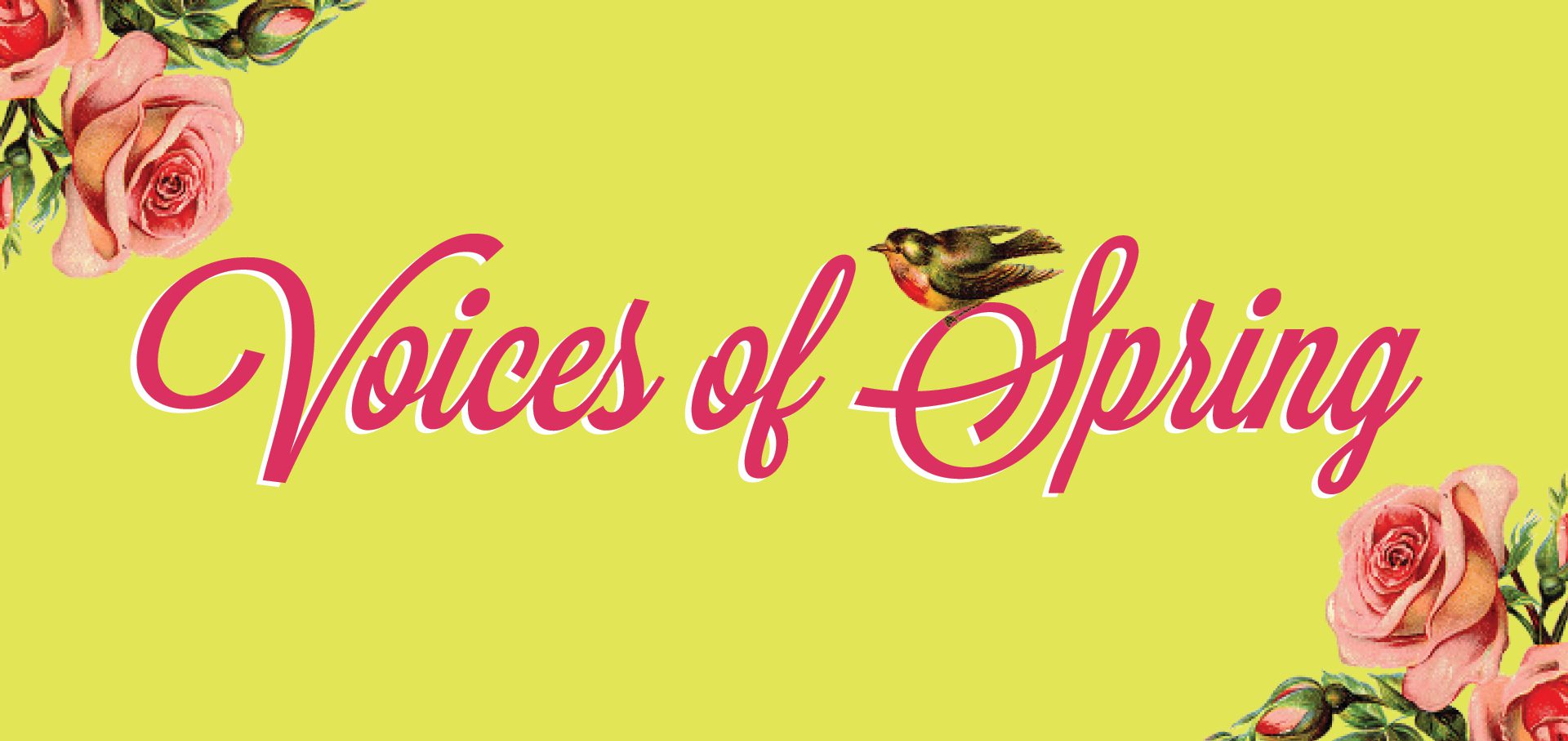
On Sunday, March 3, the Nashville Symphony and Nashville Symphony Chorus, conducted by Tucker Biddlecombe and Lauren Ramey, hosted their annual Voices of Spring choral showcase, which features a number of other vocal ensembles from the Nashville area. This year, the visiting ensembles included the Montgomery Bell Academy Chamber Choir, Nashville School of the Arts’ Paragon, the Middle Tennessee State University Women’s Chorale, and Vocal Arts Nashville. Admission to this event was free to the public and offered a wonderful opportunity for people who normally would not attend a concert to experience the Symphony, Symphony Chorus, and a number of local ensembles of all levels. The program was extremely varied, allowing each visiting ensemble to showcase an a cappella work and feature two numbers that included all five vocal ensembles as well as the Nashville Symphony. It truly was something to behold.
 The concert began with a beautiful setting of the traditional hymn “Come Thou Fount of Every Blessing,” by Mack Wilberg, which featured all of the ensembles present. The positioning of the ensembles in the hall created quite a unique effect, with ensembles on either side of the second floor, an ensemble in the back balcony, and two ensembles onstage with the orchestra. The piece started very delicately with just the MTSU Women’s Chorale singing from the back balcony, which was equally unexpected and beautiful, and created a very interesting surround-sound effect in the hall. The piece then featured some of the other ensembles individually throughout, and grew to a spectacular peak. It was quite possibly the loudest piece I have ever heard, but it was absolutely glorious and left everyone in the audience wondering how this could be topped!
The concert began with a beautiful setting of the traditional hymn “Come Thou Fount of Every Blessing,” by Mack Wilberg, which featured all of the ensembles present. The positioning of the ensembles in the hall created quite a unique effect, with ensembles on either side of the second floor, an ensemble in the back balcony, and two ensembles onstage with the orchestra. The piece started very delicately with just the MTSU Women’s Chorale singing from the back balcony, which was equally unexpected and beautiful, and created a very interesting surround-sound effect in the hall. The piece then featured some of the other ensembles individually throughout, and grew to a spectacular peak. It was quite possibly the loudest piece I have ever heard, but it was absolutely glorious and left everyone in the audience wondering how this could be topped!
The Montgomery Bell Academy Chamber Choir, a high school ensemble directed by Matt Smyth, performed Edvard Grieg’s “Brothers Sing On.” This very popular song for men’s voices is short and sweet, and was performed extremely well by the Chamber Choir. Every syllable was crisp and understandable, while still being expressive and staying true to the character of the piece. The ensemble’s blend and balance was exceptional, and their sound projected very nicely in the hall. It truly was an impressive performance from a group of young men, and added a wonderfully different blend of voices to the program.
The mood then shifted to the Nashville Symphony & Chorus’ performance of Haydn’s Te Deum for the Empress Maria Therese, which was beautifully conducted by assistant conductor Lauren Ramey. It’s always wonderful to hear the Symphony and Chorus perform together, and it’s a treat that doesn’t happen quite enough. As always, the Haydn was performed with all of the necessary elegance and technique, and served as the perfect middle ground between a five-chorus and orchestra affair and the many a cappella features of the program.
The Nashville Symphony & Chorus, conducted by Tucker Biddlecombe, later premiered World Without End, a piece by Nashville-based composer Daniel Elder. Interestingly enough, this piece’s text is the same as the Haydn, but instead translated to English, which created a wonderful link in the program. This piece truly showcased the large, well-blended sound of the Nashville Chorus, as well as their skill to always stay in balance with the orchestra. This premiere was full of so much energy and featured many different styles and moods, all of which were perfectly conveyed by the Symphony and Chorus.
It was also a very nice touch for Mr. Biddlecombe to address the audience directly, and to inform them about the connection between the Haydn and the Elder. It truly made this performance feel like a community event, and helped lighten the mood of a classical concert for those who wouldn’t normally attend. His personality is very charming and he truly made everyone in the hall feel welcome.
Nashville School of the Arts’ Paragon, directed by Trey Jacobs, performed Desh, a Traditional song arranged by Ethan Sperry. This piece is a complex and interesting setting of a traditional folk song, which featured many different rhythms and timbres simultaneously. These different timbres were embraced fully and executed wonderfully by the ensemble, and made the piece truly stand out from all of the others on the program. All of the rhythms and different individual moving parts of the piece were so steady and clean that they worked together wonderfully, and made for a truly great performance. It’s always a treat to hear such talented young musicians in performance.
The MTSU Women’s Chorale, directed by Angela Tipps, performed “Voice on the Wind,” by Sarah Quartel, a piece for women’s voices and percussion. Similarly, to the first piece on the concert, this piece began with a gorgeous solo before adding more voices and harmony. The Women’s Chorale put so much powerful energy into the piece, with even more added by the ever-present beat from the percussion. The blend and balance of the women’s voices was wonderful to hear, and this emotional and exciting piece showcased the ensemble’s strengths quite well. As an alumna of this ensemble, it was a very personal and special moment to hear them sing again.
Vocal Arts Nashville, an up-and-coming professional vocal ensemble directed by Matthew Phelps, performed four selections: “Sweet Honey Sucking Bees” by John Wilbye, “My Soul There is a Country” (from Songs of Farewell) by Charles H. H. Parry, “Deep River” by Gere Hancock, and “Jesus Was an Only Son” by Bruce Springsteen, arranged by Dunnavant. It was refreshing and interesting to have a smaller ensemble on the program, and they did not disappoint. Their selections had a nice variety in style and featured individual members of the ensembles nicely. The overall blend and balance of the ensemble was quite nice as well, especially the lower voices. Like all of the other ensembles on the program, Vocal Arts Nashville brought their own sound and style to the table, and showcased it confidently and passionately.
The concert was closed with “The Battle Hymn of the Republic” by William Steefe, arranged by Wilhousky, and again featured all five vocal ensembles and the Nashville Symphony. While I was a bit skeptical about the piece, it was a pleasant setting of the tune and text, with wonderful interplay between the orchestra and all of the vocal ensembles. Once again, the “surround sound” effect of voices from all sides of the hall was put to good use, with interjections from the ensembles in the balconies at different times during the piece. There was also a wonderful male quartette feature from the members of Vocal Arts Nashville, which added another special touch. The piece ended even larger than the first number of the concert, which did not seem possible, but it was an absolutely perfect end to an afternoon of vocal music.
Overall, it was a wonderful free concert that was well-received by a large audience. It was a wonderful opportunity to get to hear ensembles that normally would not be heard by such a large audience, and surely it was a wonderful experience for all of the performers involved. It is truly special that the Nashville Symphony & Chorus offers this experience annually!
Novel Noise: A Celebration of Tennessee
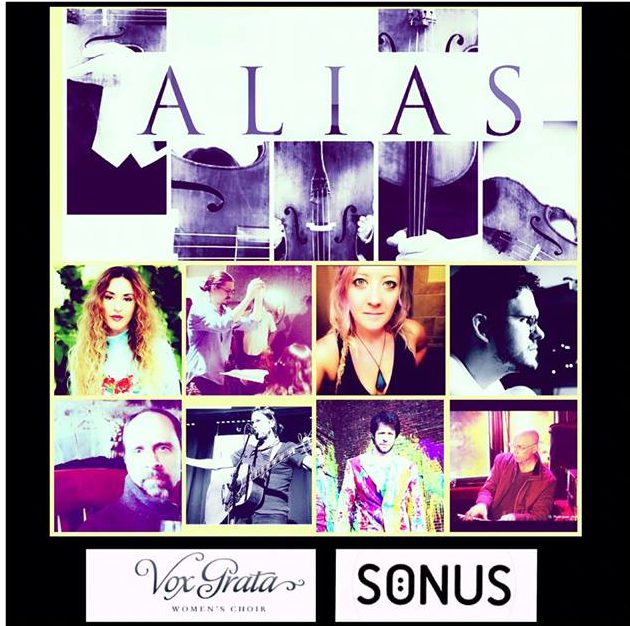
On Sunday, February 24, the Alias Ensemble performed the final concert of its three-part “Novel Noise” series. The series aims to provide the listener “unique and unusual sounds” and seems to want the audience to question the distinction of classical music as a genre and its relation to other types of musics. Keeping with the “unique” theme, in the strictest sense possible, the program offered eight world premieres for composers, mostly, working in or around the Nashville area.
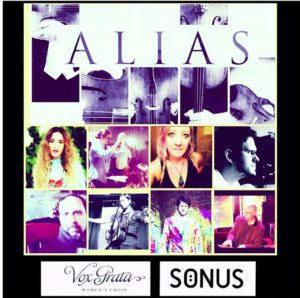 The first piece of the night was from one of the composers on the program who is not currently working in the Nashville area. Dabney Morris is currently working out of Los Angeles and has an impressive resume including many arrangements and, most notably, presence on the score of the upcoming Netflix film, All the Bright Places. Morris’s contribution to the night was a piece entitled Burnt Norton, named after the first poem in T.S. Eliot’s Four Quartets. The piece’s instrumentation is not, as you might suspect, a quartet, but rather an octet consisting of a string quintet and a woodwind trio.
The first piece of the night was from one of the composers on the program who is not currently working in the Nashville area. Dabney Morris is currently working out of Los Angeles and has an impressive resume including many arrangements and, most notably, presence on the score of the upcoming Netflix film, All the Bright Places. Morris’s contribution to the night was a piece entitled Burnt Norton, named after the first poem in T.S. Eliot’s Four Quartets. The piece’s instrumentation is not, as you might suspect, a quartet, but rather an octet consisting of a string quintet and a woodwind trio.
The piece itself seems to take inspiration from the slow pace, non-confrontational tone, and meditative nature of Eliot’s poetry. The piece seems to wander through sections, happening upon small themes along the way, seemingly meant to be more immersive than formulated. It offers a nice experience of pleasant tone combinations, thanks to the instrumentation, and interesting harmonies.
The second piece was by Peter Bradley Adams, a composer and singer-songwriter based out of Brooklyn, NY currently. His Little Flower is a piece for string quartet, two guitars, and two vocalists in octaves rather than other harmonies, at least throughout most of the piece. The piece opened with an introduction from the strings that sounded right off of the latest country single, with static harmonies and an emphasis on that stasis. The group is then joined by the guitars and the vocalists continuing this juxtaposition of the two genres. The piece continues with its three verses and then concluded with a return to the harmonic stasis of the string quartet.
Third in the program was Bruce Dudley’s Between Light and Dark. Dudley is a professor at Belmont University in Nashville and has numerous composing and performing credits to his name. The piece is written for a cello quartet and piano, which is a decently unusual instrumentation (no doubt contributing to its inclusion in the Novel Noise series). Other than the unique instrumentation, the piece, as shown in the program notes (with references to Shostakovich’s more jazzy output), continues the pattern of questioning and, at times, seriously doubting the distinction between classical and jazz genres. The piece built from rising chords in the cellos into what presents almost like a piano concerto with a quartet accompaniment throughout the piece. The piece seems to borrow, directly, harmonies from Shostakovich’s Trio #2 at times and continues to feature the piano, played beautifully by Dr. Dudley, until the final cadence.
Stephen Lamb’s Autumn Quince followed in the order of the night. Lamb is from Chattanooga, just down the road, but moved to Nashville in 2006 to work in the booming music industry. Lamb also is an avid poetry reader, as evidenced by his website, claiming that he read a whopping 37 poetry collections, with much inspiration bleeding into his work. His Autumn Quince is one such work. Inspired by, and named after, Jane Hirschfield’s Gravity and Angels. It is a piece for mixed strings and woodwinds and a single vocalist. Patrick Dailey, the vocalist for the night, delivered a stunning performance, giving a seemingly effortless performance of what must have been an incredibly difficult part.
Jordan Lehning’s A Little Light is a piece of great extremes. A cacophony of tension, jagged rhythms, and largely irregular harmonies was a jolting and quite welcome difference from the relatively calm night before it. The instrumentation is, more or less, a clarinet quintet (clarinet and string quartet) plus percussion instruments and piano. Violent harmonies and rhythms are not alone in the piece, counter-played by quite nice, diatonic calm sections. The piece was definitely my highlight of the night.
Following this was a very close second in my mind. Cristina Spinei’s Emergence is scored for a string quartet and an electric bass, a strange addition, all things considered. The piece was like an amazing nostalgic recreation of a Steve Reich piece. Yet it did not over-stay its welcome. Short, sweet, and so subtly complex, the piece is definitely among the best. Mastery of the minimalist style created an accessible, yet quite deep piece that could easily be in the group of Riley, Young, Reich, and Glass.
Matt Walker’s A Elbereth was next up. Scored for violin, viola, cello, harp, and women’s choir, our much-appreciated cellist from the Nashville symphony calls upon text from Lord of the Rings author and master linguist J.R.R. Tolkein for his large choral work. The choir and chamber musicians worked flawlessly together and delivered a nice performance of the work.
Somehow adding to the personnel on stage, Timbre Ciepke’s Gulfoss is scored for two violins, viola, cello, bass, two flutes, alto flute, and two choirs. The Vox Grata Women’s Choir (who also performed Walker’s work immediately before) and the SONUS Choir delivered the performance with the amazing chamber ensemble. The piece is inspired by a waterfall and is directly representational, being quite like a tone-painting in that way. Alias’s concert created a wonderful, diverse program showcasing a lot of talent from the Nashville area.
Wu Fei’s Hello Gold Mountain at Ingram Hall
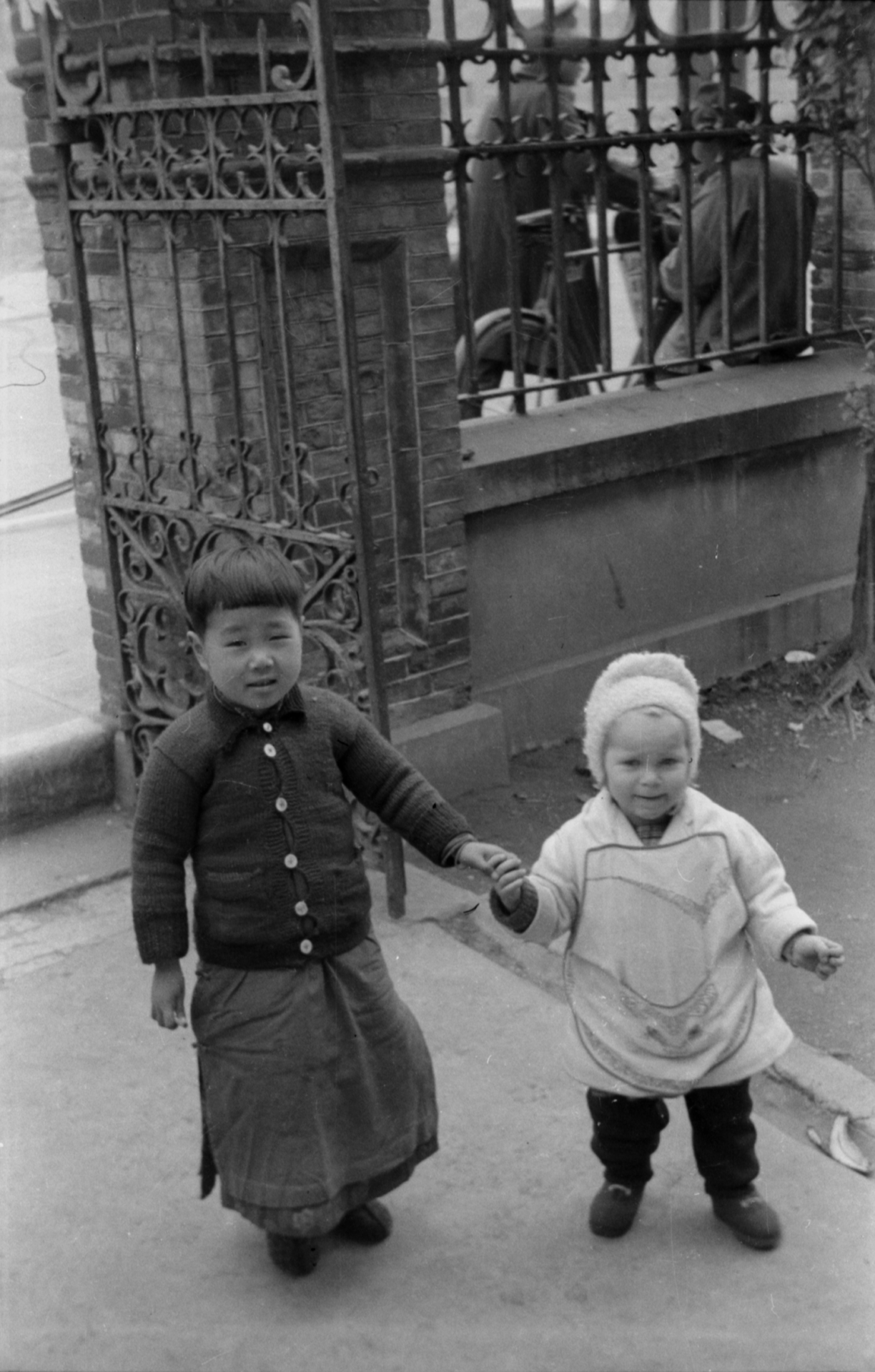
We live in an age of immigration. Since 2016 over 5 million refugees have fled the warzone in Syria and nearly a million Rohingya Muslims have fled persecution in Myanmar. Although there is some debate as to whether it merits such a proclamation, our own President has declared a state of emergency for fear of an influx of immigrants from the South. Chatterbird, a Nashville ensemble whose focus is on uniquely orchestrated music, dealt directly with this topic in its most recent concert, Hello Gold Mountain in a world premiere composition by their composer in residence, Wu Fei.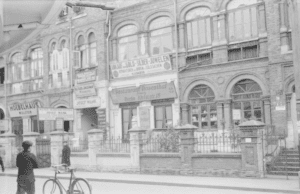 Fei’s Hello Gold Mountain: a requiem for lost possibilities of the Jewish community of Shanghai “tells the stories of Jewish refugees who fled from Europe to Shanghai during WWII and later from Shanghai to San Francisco during the Chinese Civil War.” This seven-movement programmatic work contains aleatoric elements as well as contemporary sounds enmeshed within evocative gentle references to the programmatic element. The performance featured the wonderful Chatterbird ensemble enriched by both Wu Fei’s performance on the guzheng (a 21-string zither) and Shanir Ezra Blumenkranz, a virtuosic player of the middle eastern oud. The ensemble was complemented by traditional Western instruments such as the piano and the clarinet.
Fei’s Hello Gold Mountain: a requiem for lost possibilities of the Jewish community of Shanghai “tells the stories of Jewish refugees who fled from Europe to Shanghai during WWII and later from Shanghai to San Francisco during the Chinese Civil War.” This seven-movement programmatic work contains aleatoric elements as well as contemporary sounds enmeshed within evocative gentle references to the programmatic element. The performance featured the wonderful Chatterbird ensemble enriched by both Wu Fei’s performance on the guzheng (a 21-string zither) and Shanir Ezra Blumenkranz, a virtuosic player of the middle eastern oud. The ensemble was complemented by traditional Western instruments such as the piano and the clarinet.
The most intimate movement of the evening featured Blumenkranz and Fei improvising freely, sharing riffs and melodic thoughts that seemed to connect these instruments of highly disparate cultures, surely a result of Blumenkranz’s experience with the Silk Road Ensemble, nevertheless this remarkable effect proved a powerful message to remind one of shared humanity when cultures clash.
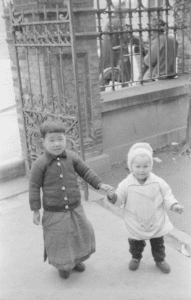
Perhaps the most amazing aspect of the project, one that Fei began years ago in 2006, was that the ensemble found a local connection to this group. A local woman, Sarah Rose Schiftan gave a reading of Chaim Nachman Bialik’s Take Me Under Your Wing, in memory of her grandmother Edith Schiftan, who was one of those who found refuge in Shanghai. The moment was quite poignant and served to remind us of the real-world consequences of these historically and geographically distant events.
The Sixth Movement “Shanghai Dark Sea,” a slow dirge featuring Fei’s own haunting voice, tremolo strings and Theremin-like bowed pipes, made the sorrow of those “lost possibilities” tangible. Further, Fei ensured that each member of the audience entered into the story through a simple chant that she printed in the program and which the conductor directed the audience to sing, effectively connecting everyone in the room. At the end of the performance, during the pregnant pause before the standing ovation I reflected on what Fei had written about the composition on its dedicated website: https://www.hellogoldmountain.com/about
“What musical possibilities were lost because the times did not allow neighbors from these different cultures to grow old together, sharing songs and stories? Similarly, what artistic creations will be lost if Europe and the United States close the door to refugees and migrants from lands in chaos?”
It is right and proper that we should consider the past in our decisions regarding the present. With this performance, Chatterbird has done us all a wonderful service in reminding us of that ancient fact. Further, they have also presented a composition whose political and cultural relevance will not soon pass.
Nashville Symphony presents Kernis, Barber, and Beethoven
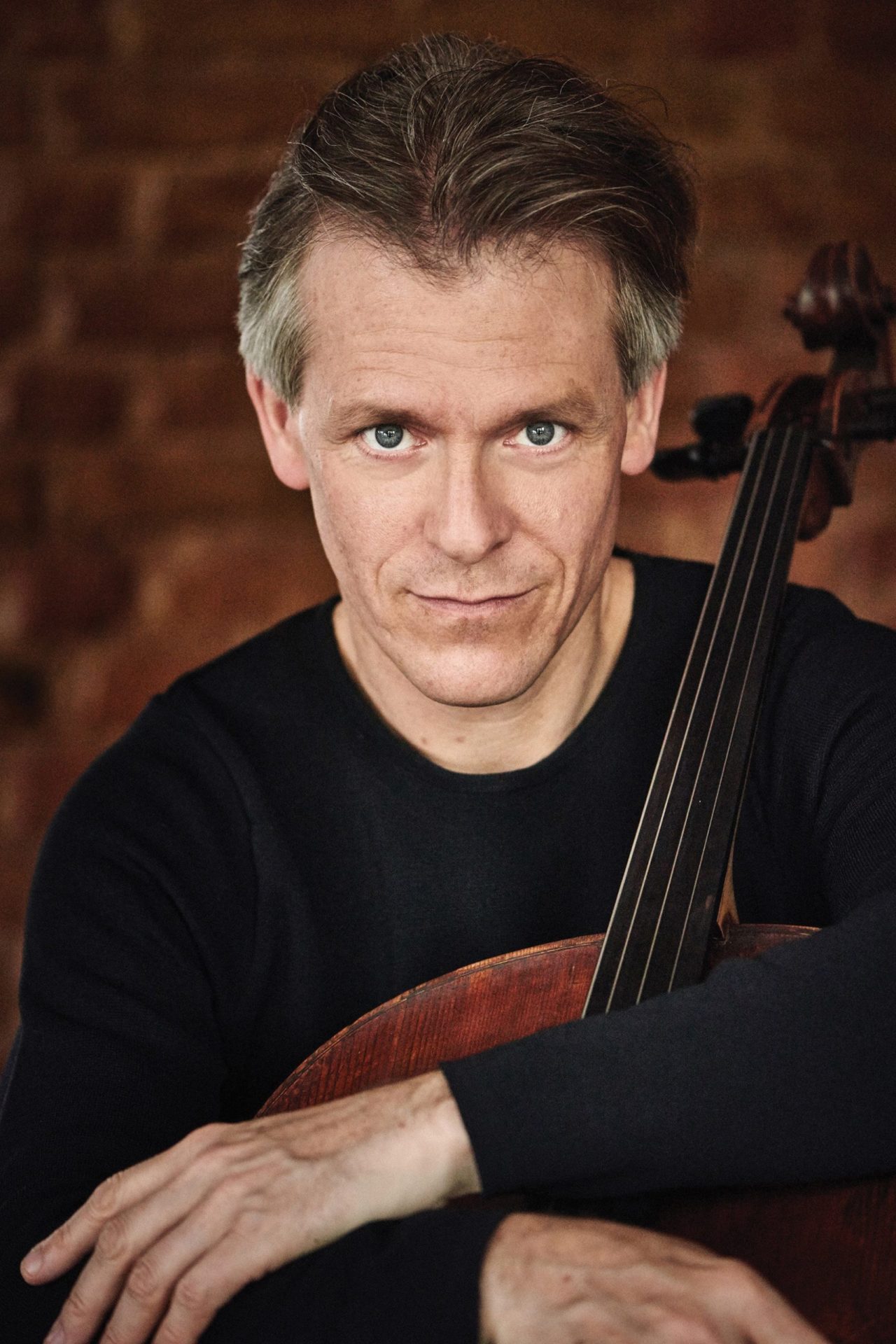
This past weekend The Nashville Symphony presented a true cornucopia of musical selections: a contemporary new work by Jay Kernis, a challenging and versatile cello concerto by Samuel Barber, and a classic masterwork by Ludwig van Beethoven. In a way, what was presented during a somber and rainy week in Nashville felt as though you were stepping into a museum of varying works of art. The program was diverse and thoughtfully put together, presenting a wide array of selections running the gamut from 19th-century classical polyphony to 21st-century grit that leaves you lost in thought, wishing for more, and then utterly satisfied by the time you reach Beethoven’s finale.
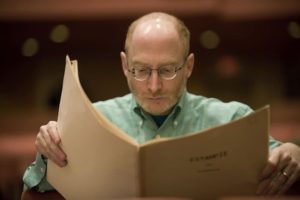
The night began with ‘Chromelodeon’, a new work by New York City-based composer Aaron Jay Kernis. As if his Pulitzer Prize in Music and 2019 Grammy nomination weren’t enough to catch the audience member’s attention, surely the chromatic and otherwise hectic first movement that unfolds was sure to do the trick. The composer describes the piece as “chromatic, colorful, melodic music performed by an orchestra.” Another way that the composer describes the aurora of this piece is how his composing reflects the emotional tenor of the time in which he writes. He hints at “the influence of living in the chaos of the world today” and how this might play a role “at a ‘molecular’ emotive level.” Truly this mood and overall chaos are evident throughout the piece. Whether it be in the “colorful” sounds of the bells at the beginning, or in the operatic second movement which switches from a theme after Handel into a tradeoff of dark melodies between violin and viola that eventually decomposes into nothingness. All of this leads up to the final movement: where harmony and chaos seem to fight until the piece ends abruptly, with a loud outburst open fifth of F and C. Kernis’ ‘Chromelodeon’ is an unabashed, contemporary work of art that must be experienced live to truly understand every facet and intricacy of the work.
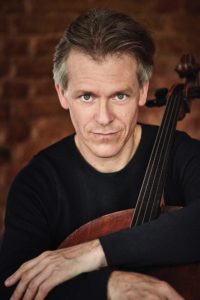
The evening then segued to an even broodier, pensive, and extremely challenging work by Samuel Barber. A composer known for his beautiful and aching melodies can also somehow compose a concerto so challenging very few orchestras can muster the talent to perform it. This being the first performance for the Nashville Symphony, one can also expect that the orchestra was just as excited to play it as Maestro Guerrero was to conduct it. Couple this energy with world-class cellist Alban Gerhardt, and what was presented was a mesmerizing performance that paired wonderfully with the contemporary piece before it. Gerhardt’s playing was sensitive and so delicate in the high register, that if one were to close their eyes during the aggressive and fierce sections, it’s possible that one could imagine a completely different soloist had entered the stage. The accompanying Nashville Symphony relish their opportunities, with exuberant, attacking violins in the first subject and eager response to the finale’s more angular dissonances. Guerrero seems on top of every aspect of this score and, while the performance is not always as expansive as it might be, the playing was superb. Woodwinds, especially principal oboe Titus Underwood, truly shines just as much as the outstanding cellist.
The Nashville Symphony concludes the evening by choosing one of the less flashy, less complex Beethoven symphonies: The Seventh. As if the two compositions prior weren’t enough to show off the orchestra’s brawn and musicality, they continue by playing with an exuberant energy that was still present yet. In particular Nashville Symphony fashion, the orchestra showed that they can perform a new contemporary American composition as well as a Classical masterwork on the same concert without sacrificing style and artistic clarity. From the get-go, Beethoven’s Seventh Symphony is notable in the composer’s oeuvre for its rhythmic, joyous spirit — a contrast to his other symphonic works, which tend to unfold as epic journeys from darkness to light. It seemed this programming was quite purposeful (the audience is surely yearning for that traditional harmony and satisfying cadences by now). And the players delivered a remarkable first movement that was gleaming with excitement and energy.
As the rest of the work unfolds, Beethoven uses harmony and rhythm together to unify each movement and bind them one to the other. The melancholy, darker second movement is one that provides a brief reprieve from the light-hearted outer movements. Sprinkled with moments of delicate counterpoint in between the swells, this movement requires transcendent balances between each section. And every symphony member delivered. In stark contrast, the third movement Presto takes the form of contredanse, an unrefined but popular dance style. Presto indeed, Guerrero used this movement to show off his orchestra’s ability. Even, in certain spots, stopping his baton all together to allow the orchestra to take control. The work closes with a mighty finale that modern commentator Maynard Solomon interpreted as “a critique” that “undermines the precepts of a calm and symmetrical Classicism, preferring those dynamic polarities of tranquility and terror, containment and abandon, and dream and intoxication that Nietzsche later identified as ‘the Apollonian-Dionysian duality.’” The mighty piece sounds forth and forth until orchestra reaches utter climax, concluding in triumph that calls for a Bravi and immediate standing ovations. Overall, one could say that this was a solid evening of varying and challenging music by Music City’s finest.
Intersection presents its third ‘Upon these Shoulders’ event with Hannibal Lokumbe’s ‘Crucifixion Resurrection.’
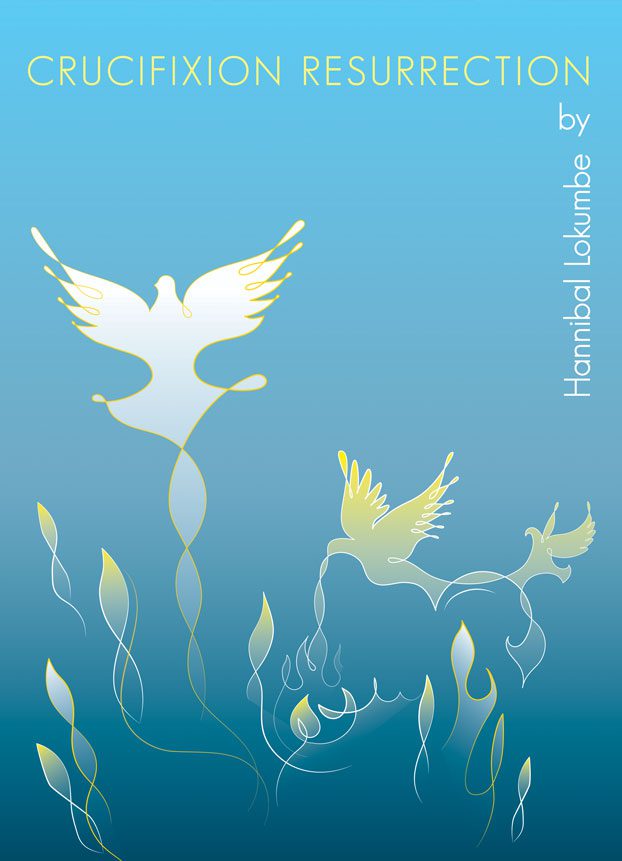
On February 9, 2019 Intersection and Choral Arts Link presented its third Upon These Shoulders concert at Fisk University. This annual concert series seeks to highlight “the voices of civil rights foot soldiers who forged new freedom pathways and whose strong shoulders continue holding us up.” This year Intersection brought in classical composer and jazz trumpeter Hannibal Lokumbe to present a number of lectures and his masterpiece Crucifixion Resurrection: Nine Souls a-Traveling (2017), which is a requiem for the nine victims of the mass shooting at Mother Emanuel African Methodist Episcopal Church in Charleston, South Carolina. The evening was remarkable, not just for the aspects that made it a celebration, but also the deep emotions and grief experienced by everyone in the room; I believe it took us all by surprise.
The evening began with a “Walk of Love” which proceeded from the front of the Fisk Chapel to Jubilee Hall on Fisk University Campus. At the front of the building one of the Fisk singers described its history as the very building the Jubilee singers funded with their tour in 1873, saving the university by acquiring the funds to build the first permanent structure for the explicit purpose of the education of black students. Inside the building remains the original portrait of the singers, commissioned by Queen Victoria after their visit.

After some discussion the audience returned to the chapel to hear Sarah Collins, the survivor of the 1963 bombing of the 16th Street Baptist Church in Birmingham, Alabama speak of her experiences of that day. Collins, in her discussion, detailed the events of the day, but also spoke of her time in the hospital after, recovering.
This was followed by Tyler Samuel’s performance of Caccini’s Ave Maria, in an arrangement by Andre van Haren. It was already a remarkably moving evening as Lokumbe and Maestra Corcoran took to the stage.
Inside the Fisk Chapel, while waiting for the concert to begin, the full audience took in the standards painted by Steve Prince which represented the 9 victims, now canonized by Lokumbe and Prince as Saints. The paintings including various aspects and relics of their lives. Indeed, the evening was nothing short of ritual. The work’s movements, titled veils, were a testament given from each victim who, when asked “What is it you would ask to be recorded into the Book of Ages?” gave an imagined testimony of their thoughts in the moment of the shooting. Some were quite powerful, especially the forgiveness of the murderer:
As the flog of crossed stars began to flutter inside the narrow space of his houng shattered heart – Reverend Pickney extended to him the hand of grace – but the shadows surrounding him and the tongues whispering to him from within the fluttering blood stained banner – commanded that he do – what they sent him to do.
(Veil Three: Ethel Lee Lance)
Or messages to the loved ones they left behind as they proceeded to their reward:
At the church that night, it made it easier to bear, knowing that our children would have you to comfort them and to help them heal from the madness of it all. And for your comfort and healing my blessed husband you have the eternal truth of my love, Your Loving Wife, Myra.
(Veil Five: Myra Thompson)
As they read or sang these texts the performers broke down and or had to pause—indeed I couldn’t find a dry eye in the audience. Soprano Koko Onwuzuruigbo and Mezzo Soprano Funmike Lagoke both brought a rich and emotional delivery that brought their saints to life—particularly the vocalise of “Veil Eight: Susie Jackson.” Tenor Roderick Dixon performed with an enchanting charisma, especially in the “Veil Nine: Tywanza Sanders,” where his dialogue with the choir and repeated exclamations for Freedom brought the room back into a joyous celebration. The MET singers, a wonderful children’s choir directed by Margaret Campbelle-Holman, were exquisitely prepared as always and the enthusiasm of the adults in the community choir helped to contribute to the magic of the event.
Lakumbe’s skills as a composer are quite wide ranging from the through-composed classic 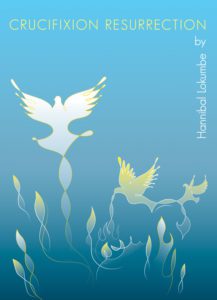 genres to the blues inflections of a second line march, the music was at times raucous, moving, celebratory or devastatingly tragic in its push further down Charles Mingus’s third stream. However, Lokumbe’s chops on his trumpet were equally remarkable. Extended techniques, circular breathing and, in moments, a simply beautiful tone clearly demonstrated the genius of this man’s playing. The rhythm section of David Pulphus (bass), Cecil Brooks III (percussion), and Anthony Wonsey (piano) maintained a pocket that was high and wide, facilitating each of their own incredible solos in the improvisatory sections of the composition, particularly in the “Veil Two: Daniel Simmons Sr” a victim who had a love for music.
genres to the blues inflections of a second line march, the music was at times raucous, moving, celebratory or devastatingly tragic in its push further down Charles Mingus’s third stream. However, Lokumbe’s chops on his trumpet were equally remarkable. Extended techniques, circular breathing and, in moments, a simply beautiful tone clearly demonstrated the genius of this man’s playing. The rhythm section of David Pulphus (bass), Cecil Brooks III (percussion), and Anthony Wonsey (piano) maintained a pocket that was high and wide, facilitating each of their own incredible solos in the improvisatory sections of the composition, particularly in the “Veil Two: Daniel Simmons Sr” a victim who had a love for music.
From Fisk University in 1873 to Birmingham, Alabama in 1963 to North Carolina 2017, the evening told a story of the racial troubles in the United States but it also gave a vision of hope and forgiveness—a path for the future. Each year Intersection’s Upon the Shoulder’s concert is one of the most important culture events in Music City and this year is no different. I am quite interested to see what they do next year.
Attitude: Lucy Negro Redux gives a voice and a story to the “Dark Lady,” Shakespeare’s mysterious love interest.
“I have walked Lucy’s walk all my life” narrates Caroline Randall Williams, author/poet of the book upon which the ballet is based. Williams’ spoken word in the ballet is Lucy’s voice in Elizabethan era and simultaneously Williams’ own voice as a woman of color. It speaks from the perspective of minority and otherness but with a proud and firm voice. Dancer Kayla Rowder interprets each line and more: she is able to portray the development of Lucy as a character that claims her power for herself. Composer/musician Rhiannon Giddens further contributes a dimension to Lucy in scoring music that draws from African roots, traditional American music, and Renaissance styles. Giddens’ singing puts emphasis on Lucy’s soul as an important aspect in her story.

The ballet production of Lucy Negro Redux is the collaborative effort of Nashville Ballet artistic director Paul Vasterling and Caroline Williams. Their respective visions for this work are completed by the added efforts of musicians Rhiannon Giddens and Francesco Turrisi.The co-composers used voice, piano, cello banjo, minstrel banjo, long necked lute, frame drums, and fiddles in the live performance of the score.
The ballet opens with Williams on stage in a red cocktail dress as narrator and Lucy (Rowder) in simple nude undergarment. Through the narrators spoken word we are introduced to both women. Williams’ theory is that the subject of Shakespeare’s sonnets 127-152, and commonly known as the “Dark Lady sonnets,” is a black girl. The dark lady is unidentified in historical sources but Williams became convinced that indeed Shakespeare had a black lover and the opportunity to give her a voice by writing was irresistible. It becomes clear that Williams found the potential to tell her own story while creating Lucy’s story and the reflection of Lucy in Williams is exposed by the dancer’s movements in the prologue.
In the first scene the women are whisked away to a London train station to meet a professor who provides research to support the Lucy Negro theory. The ensemble is in costumes of brightly colored street clothes to depict a bustling station and the busy choreography is reflected in a driving repetitive rhythm from banjo and percussion. The momentum injected into what felt more like a play suddenly becomes an energetic ballet. Lucy, now in red also, pairs with the Professor (Sjoblom) as he explains his theories of Shakespeare’s dark lady. Williams comically quotes sonnet 130, “If hairs be wires, black wires grow from her head…” and begs to be told that’s not a black girl. Sjoblom essentially controls Rowder’s dancing as he plays the Professor discussing his idea of Lucy to Williams.
A genuinely handsome Shakespeare (Thorne) appears in the fourth scene alongside Lucy, now in Elizabethan era. His costume is exactly what one would expect the Bard to be wearing: Green top and brown tights. He is purposefully characterized as obsessed with and swooning over Lucy who, in every way, looks the seductress in her red dress. Williams makes it clear that Shakespeare is not the subject of this story as Lucy develops into her own character.
Lucy Negro was a known brothel owner and Shakespeare an apparent patron. At Lucy’s place, there is a sense of ownership and pride from her. The music provides her with a bluesy theme with Giddens singing lyrics including “this is Lucy’s place.” Alternating with the singing is Williams’ spoken word in an enthralling and well-performed duet with Giddens, sharing some of Lucy’s thoughts on running a brothel, being the object of lust, and being in the business of pleasure. Lucy’s women are scantily clad dancers in a fog-filled den who dance for her. The Fair Youth (Scheuer) is introduced among the harlots as the ideal male form of desire. He is also the subject of sonnets 1-126 preceding the Dark Lady sonnets. Scheuer’s posture and movements are commanding. His muscular physique compared to Thorne’s once again draws attention away from Shakespeare’s character. Both the Fair Youth and Lucy are subjects of Shakespeare’s passion and yet are portrayed as larger, more central figures than he in the performance.
The Fair Youth brings a lustful weakness to Shakespeare and the two share a scene in which the sensual choreography entangles them. They move across the stage, on the floor, and into each other’s arms.
The ninth scene is set with Shakespeare writing at his table while his lines come to life as dancers on the stage. The music is pensive, lending repetitive themes on the violin to the dancers’ movements. Turrisi’s piano playing is dreamlike and fills moments of the performance with an air that is fresh and calming. The two musicians are able to play two or three instruments at a time and create such complex compositions.Before intermission, a whirl of fierce duets between Lucy and Shakespeare takes place. The love triangle has come to a head. Confrontation and argument are interpreted by the dancers with such delicate movement. What seems difficult to express while maintaining gracefulness they do with perfection. Williams narrates the difficulties of life as a black girl in a white man’s world which ties the two women’s stories together: modern and past. Lucy rejects Shakespeare’s pleading and stands resolute and proud as Williams’ words go beyond describing a couple’s struggles and encompass a struggle of color and gender that spans time.

Following intermission, the Gesta Grayorum scene involves a large ensemble with many props and costumes and the festivities of the scene allude to orgiastic events. It is a spectacular scene but hardly pertaining to the three characters. Rather, the celebration provides relief from their tension and puts on display the fabulous cast. The final few scenes are strung together to rejoin the love triangle of Lucy, Shakespeare, and the Fair Youth. They are brief and dreamy but aesthetically captivating.
In the epilogue, resolution, claiming power, and knowing one’s own beauty are the themes presented as Williams and Lucy are the only characters once again remaining on stage. The women no doubt stand proud and confident. Lucy, en pointe, moves through her solo finale while Williams recites her closing statements and Giddens walks from her set to center stage while humming and beating her chest.
At moments in Lucy Negro Redux the theater became a place where art forms combined to reach heights that were unbelievably rich and satisfying, specifically the scenes in Lucy’s brothel where the music was supporting such intense spoken word as well as Shakespeare and Lucy in scenes of passionate love and anger. The powerful ending with all three women in red uniting their expressions of poetry, dance, and music gave each of them Lucy’s story for themselves.
Nashville Symphony Plays Smetana, Berg, and Dvořák, with Special Guest Gil Shaham
On Sunday January 13, 2019, the Nashville Symphony Orchestra gave the final of three concerts playing Bedřich Smetana’s The Moldau (or Vltava), Alban Berg’s Concerto for Violin and Orchestra, and Antonin Dvořák’s Symphony No. 9 in E Minor, Op.95, “From the New World.” The concert series featured the culmination of a three-part project by film-maker Duncan Copp, The Cosmos which is preceded by The Planets, and The Earth.
The Moldau (or Vltava) is the second in a set of six symphonic poems that Smetana wrote in the mid-1870s entitled Má Vlast (or My Homeland). The set, as the name suggests, depicts various scenes of Smetana’s Czech life and homeland. The Moldau is a depiction of the river Moldau that runs through Prague.
The piece opens with the two streams that come to form the Moldau, one cold and one warm, depicted by the beautifully flowing sixteenth note lines in the flutes and clarinets, handled wonderfully by the musicians. This scene continues with increasing participation, topped with a simple melody reminiscent of old Czech folk songs in a luscious e minor. The river flows for a while and stumbles upon a peasant wedding marked by a very rustic theme, beginning with a rather short staccato introduction from the second violins and violas. The theme itself defies the staccato expectation, becoming just as lush as the river before it, but with a different feeling to it. One can feel the charm of the little wedding and the happiness from all involved. There is an abrupt shift back to the transitional material taking us out of the peasant wedding and into a new section.

What follows is my personal favorite part of the piece, the moonlight dance of the nymphs. Starting with slowly building chords, it moves into an echo of the beginning of the movement with passing sixteenth notes in the flutes alone initially but joined quickly by the clarinets. This time, however, the clarinets do not match the rhythm of the flutes, instead offering a triplet figure against the sixteenth notes provided. This creates a quite off-putting effect, not only denying the expectation set up in the beginning, but questioning the meter of the section entirely. Towards the end, the sixteenth notes of the flutes seem to win over when the clarinets match their figure in a swirling harmony serving as a transition into the next section.
Though we feel as though the sixteenth note line has triumphed, the next section, the broad flow of the Vltava, greets us with the theme from the beginning in a meter much more akin to the triplets throughout the clarinet line. Finally, the Moldau flows around the castle Vyšehrad, which happens to be the first poem in the Má Vlast set. We hear the theme from the Vyšehrad alone at first, but eventually joined by the Moldau’s theme from the beginning leading us into the final cadence and conclusion of the piece.
Next on the concert was the Berg Violin Concerto. Alban Berg (1885-1935) was a part of the Second Viennese School of composition lead by Arnold Schoenberg. The Second Viennese School had an emphasis on moving past what they saw as the limitations of tonality as it existed at the time. Schoenberg devised a system in which all twelve chromatic tones were to be arranged so as none repeated before all twelve had been played. This has become a very basic definition of serialism in music.
Berg subscribed quite heavily to this system and used it to create his Violin Concerto in 1936 at the request of Russian-American violinist Louis Krasner, but was expedited by the death of Viennese icon Manon Gropius, with whom Berg was particularly associated. The actress, Gropius, was the daughter of Alma Mahler and her second husband. The entire Second Viennese School was particularly close to the Mahler family, but Berg was especially close with Alma, so the loss was felt quite hard by the composer. Gropius’s death sparked the Violin Concerto’s importance to Berg (he put aside his opera Lulu for it) and inspired the subtitle: “To the Memory of an Angel.”
Atonal, and particularly serial, music can be difficult to digest and rather academic at times, but Berg has always been particularly accessible while still relying on the serial system, bringing in romantic themes and melodies as well as adapting his tone rows to echo tonal systems. The Violin Concerto is a wonderful synopsis of Berg’s compositional life. The tone row shows quite clearly this link to tonality, being a series of alternating minor and major triads, finishing with a series of whole steps, as opposed to Schoenberg’s rows which tend to be more sporadic.

The Nashville Symphony had guest violinist Gil Shaham in to perform the piece with them. Shaham has quite an impressive bio and it is immediately evident why as soon as he begins to play. The piece opens with arpeggios outlining the open strings on the violin, which should be nothing impressive to the listener, but for Shaham it outlined exactly what you will hear for the rest of the piece, being a stunning sound even in the face of incredibly challenging passages to come.
Beyond, as the program notes put it, flawless technique, Shaham’s deep knowledge of the piece was put immediately on display. It is clear at all times what not only the conductor, but the soloist, Shaham, thought was the most significant line at all times. With Shaham on stage, it seemed that nothing else was necessary, it seemed as though it were a natural thing that the group had been performing for years. Shaham’s involvement with the orchestra, musically and emotionally was evident. There were two particularly notable moments in the performance that shined above the rest of near perfect music making: the violin cadenzas at the beginning of the second movement were jaw-dropping and the introduction of Bach’s Es ist Genug chorale in the second movement will always be one of my personal favorite musical moments of the twentieth century. If you missed the performance, Shaham has recordings of Violin Concerti from the 1930s easily accessible through Spotify and iTunes which are well worth the listen.
The night finished with Dvořák’s “New World Symphony.” The New World is by far one of the favorite works of Dvořák’s. It is one of those pieces that every orchestra has played a thousand times and every audience member has heard almost as much. Still, though, the performance was quite good. In particular, the famous English horn solo in the second movement was played brilliantly by Roger Weismeyer, being by far the highlight of the piece.
The program has followed in an interesting trend from the NSO this year. That being the pairing of a twentieth-century work that can be at times a bit less accessible than others with either a late-classical or Romantic work (or works). This program of Smetana, Berg, and Dvořák, the program of Corigliano’s First Symphony and Brahms’s Second Piano Concerto, and the program of Beethoven’s Violin Concerto and Adams’s Harmonielehre all show a consideration for the audience’s taste for classics and want for modern music in the Symphony Hall.
Gil Shaham to perform Berg’s Violin Concerto in Nashville!
Of course they are advertising the HD Odyssey, but the Berg is so rarely heard!
PROGRAM
Smetana – The Moldau from Má Vlast
Berg – Violin Concerto
Cosmos – An HD Odyssey, featuring Dvořák’s Symphony No. 9, “From the New World”
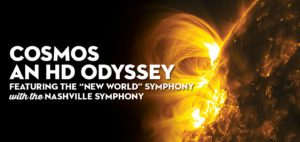
PERFORMERS
Nashville Symphony | Giancarlo Guerrero, conductor | Gil Shaham, violin
The Symphony’s blurb: The Nashville Symphony performs Dvořák’s Symphony No. 9, “From the New World,” accompanied by footage of deep space captured by NASA. These breathtaking visuals will add a whole new dimension to this beloved symphony, which was inspired by American folk music and African American spirituals. Celebrated soloist Gil Shaham joins the orchestra for Berg’s Violin Concerto, which honors “the memory of angel” with music that moves from dreamy introspection to surging emotional outbursts.
Here’s a nice description by the Maestro:
Handel’s Messiah by the Nashville Symphony and Chorus: an Interview with Tucker Biddlecombe
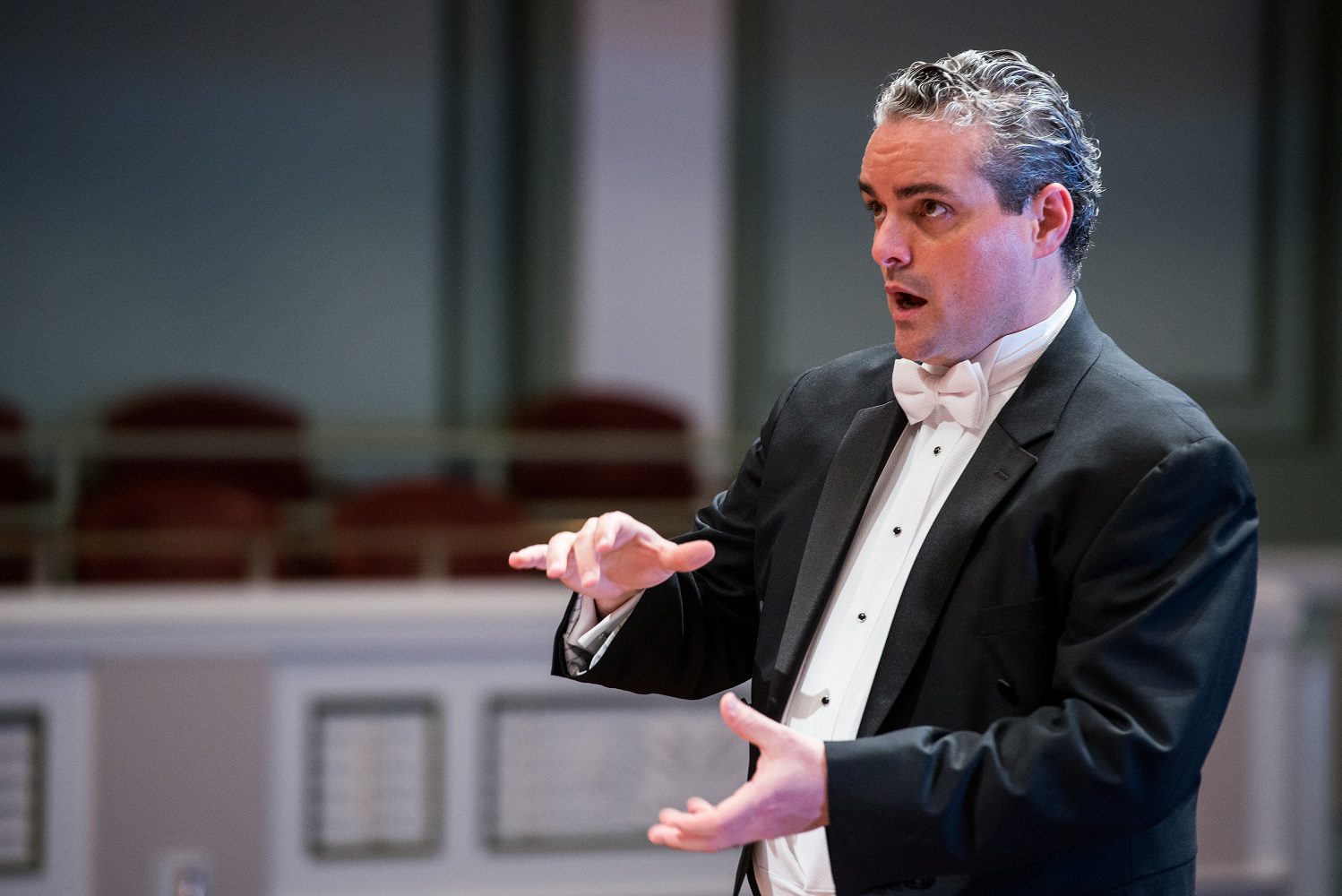
On December 13th-16th Maestro Giancarlo Guerrero will conduct the Nashville Symphony and Chorus as they perform Georg Frideric Händel’s Oratorio The Messiah at the Schermerhorn Symphony Hall. This is Chorus Director Tucker Biddlecombe’s second year directing the Symphony Chorus so the Music City Review took the opportunity to ask Prof. Biddlecombe a few questions regarding the chorus and his perception of the scene in Nashville. Here are his insights:
MCR: I understand that this is the first time that you and Maestro Guerrero have collaborated on Handel’s masterpiece. Can you tell me a little bit about how it came about?
TB: For the past two years we have had guest conductors come in and conduct the chorus and orchestra for Messiah, namely Christopher Warren-Green and Gary Thor Wedow. Interestingly, I was watching the Royal Wedding last year and there was Maestro Warren-Green, conducting the Trinity ch
oir and orchestra. Maestro Guerrerro says he conducts Messiah every few years “for the good of his soul”, and then invites other experts to share their interpretation. It’s been enlightening to see all of these different perspectives, and to prepare the chorus to meet each particular challenge.
You’ve been in Nashville since 2012, Directing Choral activities at Vanderbilt and have directed the Symphony Chorus since 2016, what is your perception of Nashville’s classic music scene? Where do you see its biggest opportunities?
Nashville’s classical music scene is experiencing a significant shift. I feel like we’ve come from a community-based, participatory music scene to a quasi-professional one in just a few short years. The difference is observable everywhere, especially in the kinds of singers who are auditioning for the Symphony Chorus. Even though we’re a volunteer organization, more and more trained professionals are joining the chorus to create networking opportunities, sharpen their ensemble chops, and be affiliated with our Symphony in some way. This influx of people has diversified the chorus in many ways, and made our sound significantly stronger and more musical. My University students feel this as well, and more and more of them are staying here in Nashville after they graduate.
Can you tell me about your choir? We recently saw the chorus’s performance of Stravinsky’s Symphony of Psalms and Ravel’s Daphnis et Chloé with the Symphony. Both very difficult pieces, could you talk about the work that went into rehearsing and preparing for these pieces?
The Nashville Symphony Chorus is an extremely dedicated group of people. We are diverse choir in terms of experience and musical training, and everyone brings their own biases about which type of music they like best. When we open a new piece of music, however, those biases melt away and we focus on the challenge in front of us. The Ravel was particularly difficult to prepare because without the orchestra you lack a certain context. There is also a killer a cappella section in the middle of the work that took many weeks to prepare with significant practice on their own outside of rehearsal. While works like Haydn Creation and the Verdi Requiem play to the strengths of the ensemble, Stravinsky is like a close-up mirror. We had to take extreme care with our preparation, and tune the dissonances carefully. Once you get over the unusual harmonies, the inherent beauty of the music becomes undeniable, especially in the final movement.
How will your approach differ in preparation for the Messiah?
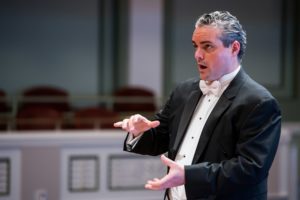
Since most of the chorus members know this work well and have sung it for many years, it can be challenging to get them to think of things in a different way. In addition, the problems can really mount if they sang MESSIAH when they were much younger. Each singer has a much more developed and trained voice now, but the muscles tend to remember how you sang it when you were younger. That can cause tension and heaviness. The challenge is getting them to approach things lightly so the tempi can move quick. Also, since we’re not really in a note-teaching posture, it’s quite a lot of phrasing ideas, stylistic concerns, and understanding of the text that we’re trying to get across.
What is your favorite part of Handel’s masterpiece? Is there a specific moment that we should listen for?
![]() My favorite moment happens pretty early on. You know, as a strict oratorio, this work leaves a little to be desired. It floats all over time and space, and doesn’t have a great flow of storyline. Still, the opening chords of “Comfort Ye” always strike me – such a simple beginning to a complex work. Also, some of the choruses we love are so biting and mocking. For example – “He trusted in God that he will deliver him” is the crowd mocking Jesus on the cross – essentially, prove to us you’re the Son of God… free yourself. Heavy stuff.
My favorite moment happens pretty early on. You know, as a strict oratorio, this work leaves a little to be desired. It floats all over time and space, and doesn’t have a great flow of storyline. Still, the opening chords of “Comfort Ye” always strike me – such a simple beginning to a complex work. Also, some of the choruses we love are so biting and mocking. For example – “He trusted in God that he will deliver him” is the crowd mocking Jesus on the cross – essentially, prove to us you’re the Son of God… free yourself. Heavy stuff.
Handel’s masterpiece is the first piece to be composed that has remained in the repertoire with repeated performance since it was premiered in 1742. What is it about the piece that you think has kept it in the hearts and minds of the classical music audience?
In classical music, we have quite a few rock anthems. Messiah is definitely one of those. There’s power in an audience knowing the music – it’s kind of like the Beatles albums I know by heart because they were played during my entire childhood. I learned them by osmosis, almost. I think audiences are ready to be entertained, and as a classical performer that’s always exciting to see.
A New Take on a Classic: The Nashville Ballet’s The Nutcracker
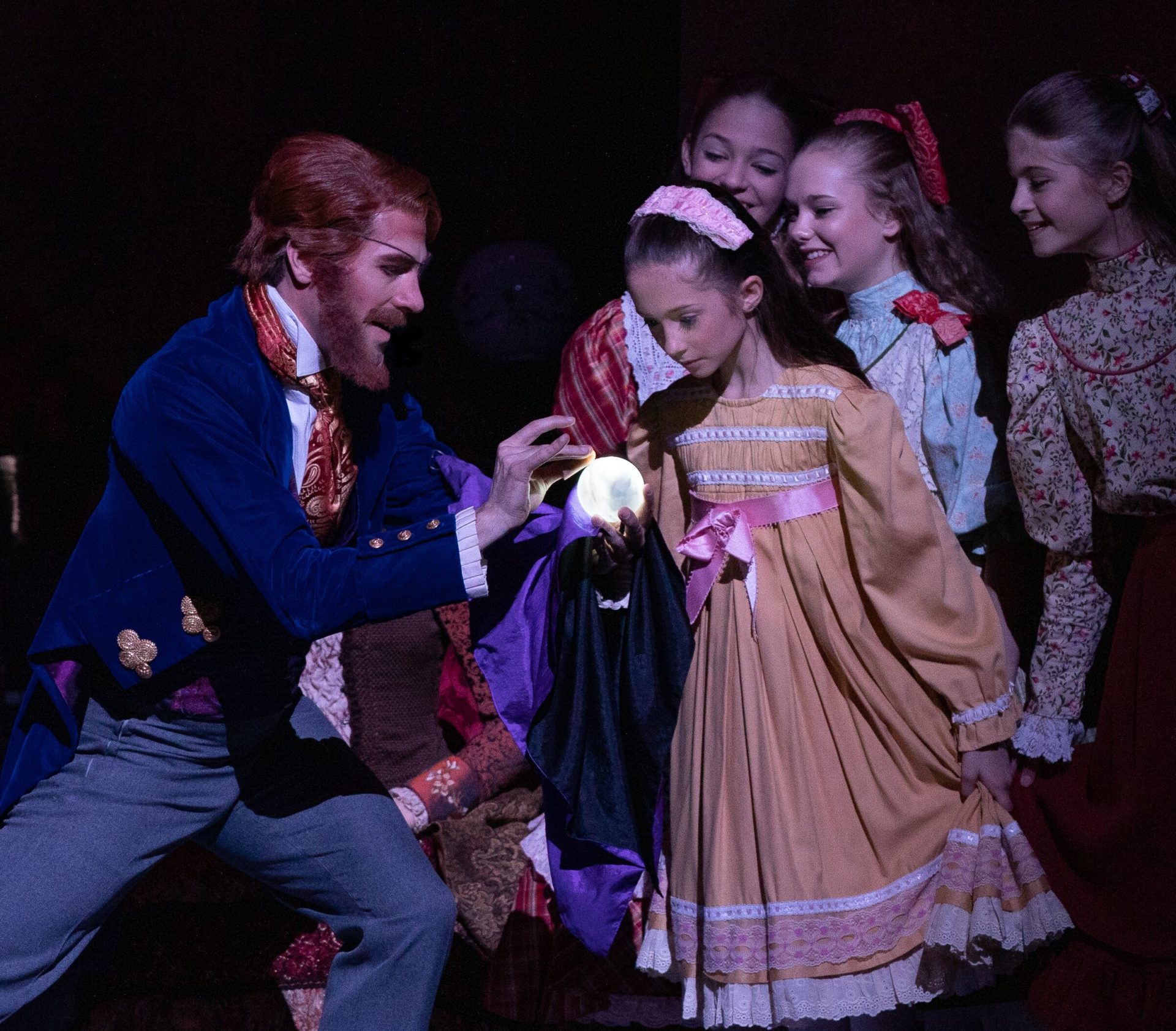
When it comes to a classic work such as Tchaikovsky’s The Nutcracker, it can be difficult to make it feel fresh and new. Fortunately for Nashville audiences this holiday season, the Nashville Ballet is more than up to the challenge. From the first notes of the overture, the ballet gave the feeling of being greeted by an old friend with a new story to tell, rather than a tired rehashing of the same old thing.
The setting of the ballet was the most notable alteration. The very first interaction we witness is Clara and her Uncle Drosselmeyer at the 1897 Tennessee Centennial International Exposition, presumably in the

summer. In a fantastical feat of costuming and lighting, the dancers appear to be sepia toned. Here Clara interacts with a number of vendors and merchants, who represent the various characters she later meets in the Land of Sweets. In a wonderful act of foreshadowing, Clara is smitten with a wooden nutcracker doll and Drosselmeyer slyly purchases it and tucks it away.
When the scrim lifts, the audience is transported to winter of the same year. The setting is highly reminiscent of the Belmont Mansion, and the costuming is both beautiful and accurate for the period. One of the pitfalls productions of The Nutcracker can encounter is a feeling of lethargy during the party sequence of Act I. Staid adult figure dancing punctuated by children running around can be boring, no matter how beautiful the costumes and setting. This production was the polar opposite of staid. Each dancer portrayed a three-dimensional character, from Clara and Drosselmeyer down to the bit players. The choreography was orchestrated in such a way that there were always two or three distinct pockets of action happening at different places on stage, so no matter where the eye might alight, there was something worth watching.
A particularly impressive aspect of the production was the high number and quality of young dancers. Several of the dances in the second act that are often done as duets or trios were expanded to include younger dancers. Tea, the Chinese Dance, utilized several dancers who manipulated a Chinese dragon on poles behind the soloist, while Trepak, the Russian Dance, included a set of live Russian dolls that bobbed along while the Russian soloist leapt and spun across the stage. The dancer who portrayed Clara was exquisite, and the smallest dancers who appeared to be no more than five or six years old were utterly charming as mice in the battle sequence, and as the Marzipan Shepherdess’ sheep. While it was obvious that the younger children are in the early stages of their ballet training, they had impeccable timing and hit their marks like pros.
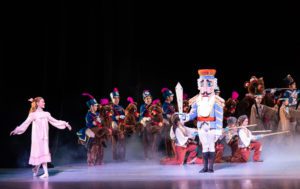
The company dancers were in fine form as well. The choreography included several pas de deux with gorgeous dancing from the Snow King and Queen, the Nutcracker and the Dewdrop Fairy, an Arabian snake charmer and his snake, and the Sugar Plum Fairy and her prince. The ensemble dancing was mesmerizing, the corps de ballet a well oiled machine.
The Nashville Ballet took some interesting angles with dance order and plot interpretation. Uncle Drosselmeyer engaged in an impressive amount of sleight-of-hand magic (which is surely above and beyond the typical skill set of a ballet dancer), the effect of which set his character up to be a magician of the stage rather than a mystical being, which is a more typical interpretation. Separating the role of the Nutcracker from that of the Prince was an interesting storytelling choice; the Nutcracker became a trusted lieutenant and decorated hero returning home, rather than an enchanted prince reclaiming his kingdom. Another departure from traditional productions was the reordering of a few dances in Act II. Tchaikovsky’s memorable Waltz of the Flowers appeared as the second number rather than toward the end of the act, which allowed for an incredible reveal at the end of the dance as the green silk backdrop fluttered to the ground revealing the spectacular set of the Land of Sweets.
The orchestra was a delight as well, consisting of musicians from the Nashville Symphony and nearby university professors. While the music of The Nutcracker is never subservient to the dancing, a good production delivers the familiar strains in the expected way, so the audience is free to revel in the drama unfolding on stage. These musicians hit the mark and executed their parts with ease and charm, never once breaking the spell.
It is a challenging thing to reinterpret a classic story, especially one so beloved by so many. The Nashville Ballet has done a remarkable job, keeping the core elements true to the original, but giving it a unique twist. A visit to Clara’s dream world of sweets is well worth your time this holiday season.


